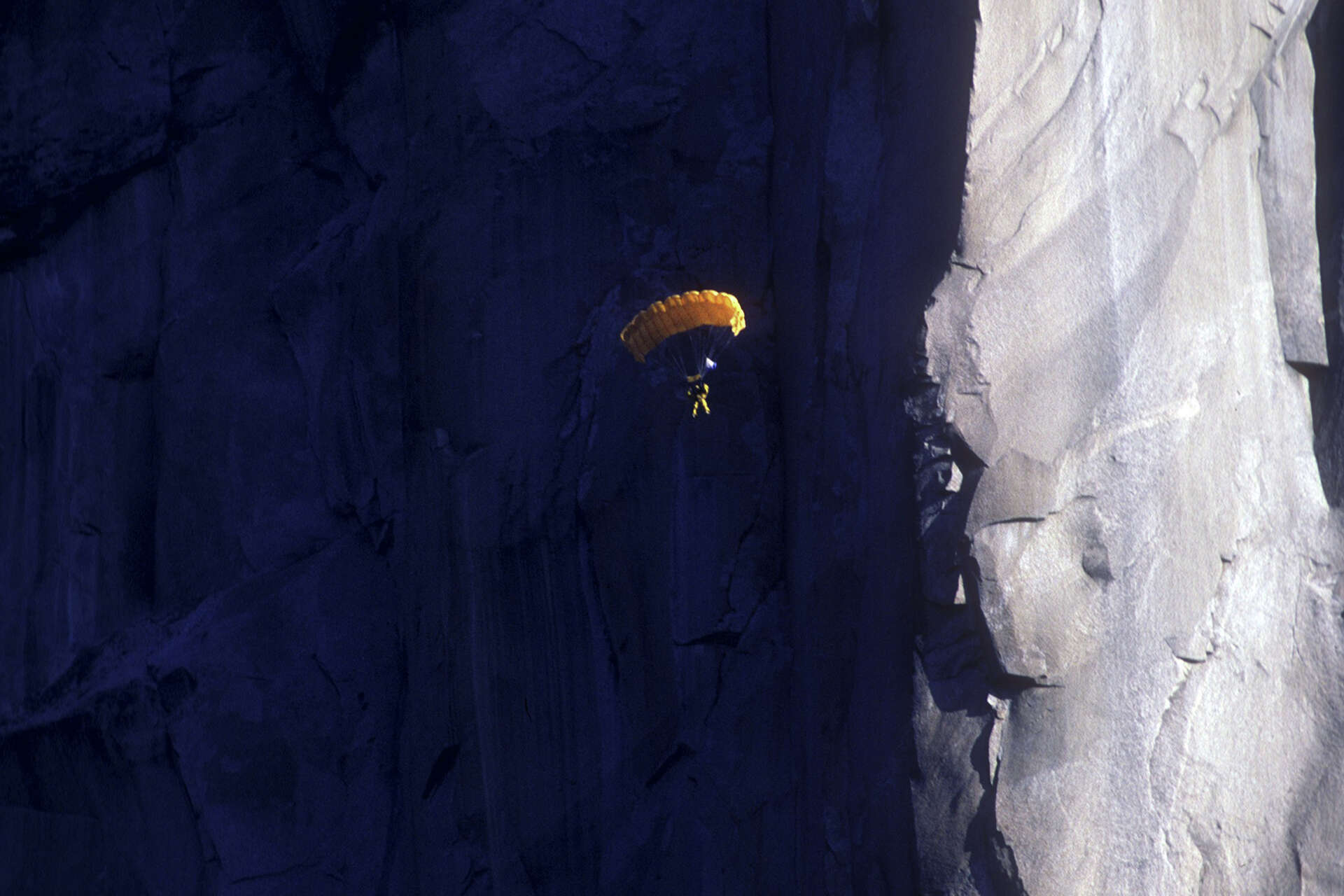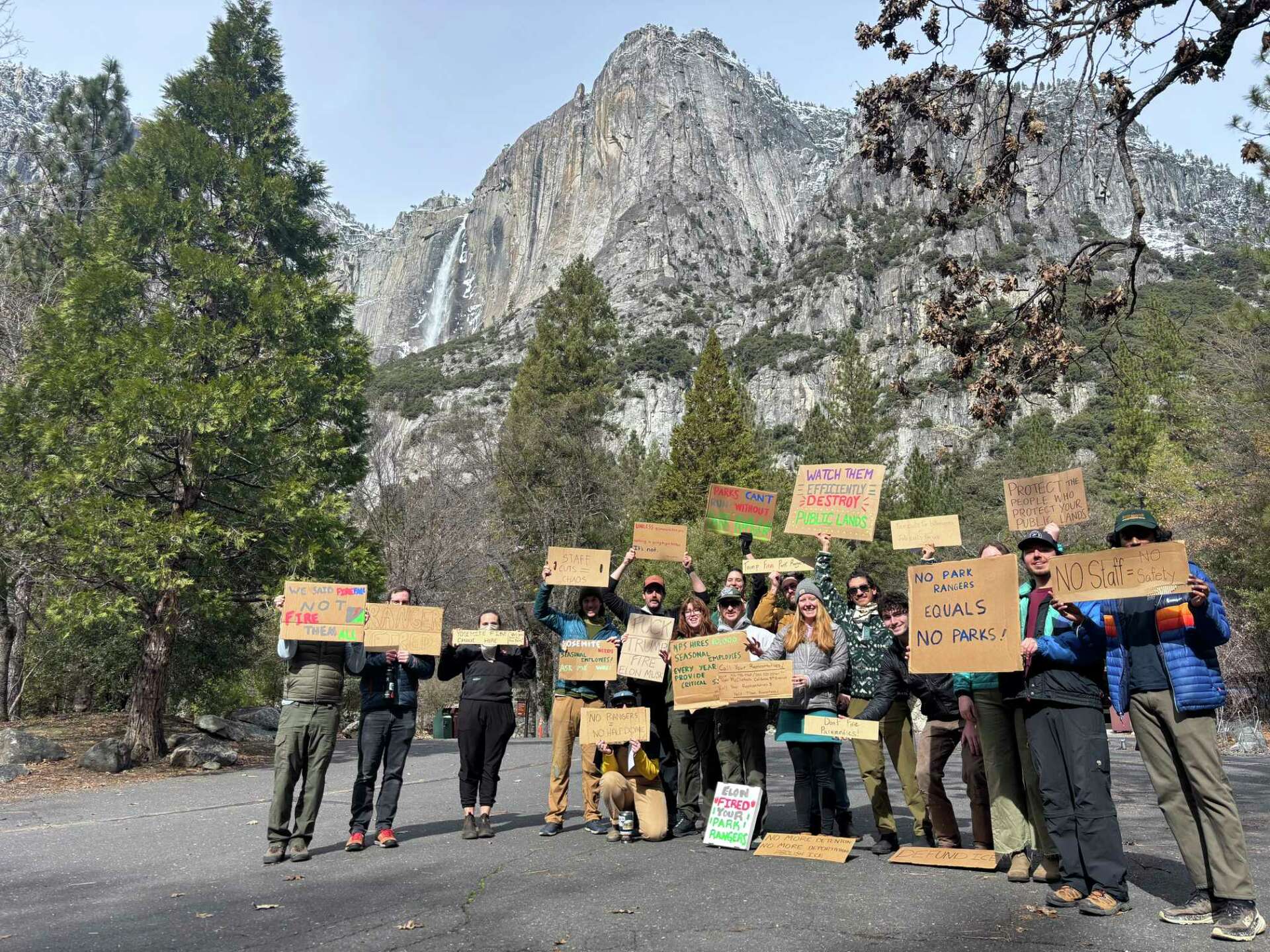BASE Jumpers Run Wild at Yosemite as Park Staff Face Shutdown Furloughs
BASE Jumpers Run Wild at Yosemite as Park Staff Face Shutdown Furloughs

Illegal BASE Jumping Booms During Federal Shutdown
Yosemite National Park has become ground zero for illegal BASE jumping activity as the federal government shutdown enters its fourth week. With approximately 200 park employees furloughed—nearly 50% of Yosemite's staff—adrenaline-seeking BASE jumpers are capitalizing on reduced enforcement to leap from the iconic 3,000-foot El Capitan in broad daylight.
Rock climber Charles Winstead, who has spent much of October scaling El Capitan, reported witnessing roughly 20 illegal jumps since the shutdown began on October 1. "You hear them before you see them," Winstead told reporters from his perch 1,000 feet up the granite wall. "Then the parachute pops, and there's no more noise."

What makes this surge particularly striking is the brazenness of the jumpers. Traditionally, BASE jumpers in Yosemite conducted their illegal leaps furtively at dawn or dusk. Now, they're jumping at high noon in full view of crowds gathered in the valley meadows below, drawing cheers from spectators and climbers alike.
Government Shutdown Creates Enforcement Vacuum
BASE jumping—where participants parachute from Buildings, Antennas, Spans, and Earth (hence the acronym)—has been illegal in all 63 national parks since the mid-1980s due to significant safety risks to participants, bystanders, and first responders. Violators face up to $5,000 in fines and six months in jail.
However, the current federal shutdown has created what park employees describe as a "Wild Wild West" scenario. With ranger stations at park entrances standing empty and minimal patrol presence, enforcement has become virtually impossible. Only one wilderness ranger—a volunteer—has been patrolling the park's 1,169 square miles since the shutdown began, according to anonymous park employees.

"It's like the Wild Wild West," John DeGrazio, founder of YExplore Yosemite Adventures, explained. "These people are counting on no enforcement because of the shutdown."
Peter Zabrok, a 66-year-old Canadian climber who has completed 924 career nights bivouacked on El Capitan, witnessed eight jumpers in a single morning—unprecedented in his 30 years and 60 seasons on the wall. "Never seen anything like it," Zabrok stated from his portaledge hundreds of feet above the valley floor.
Public Safety Risks and Historic Tragedies
The surge in illegal BASE jumping raises serious safety concerns beyond the jumpers themselves. The cat-and-mouse game between BASE jumpers and rangers has taken tragic turns in the past. In 1999, Frank Gambalie III drowned in the Merced River while fleeing park rangers after an illegal jump. Just months later, Jan Davis died when her parachute failed to open during a protest jump over Gambalie's death.
Elisabeth Barton, cofounder of Echo Adventure Cooperative, a Yosemite guiding service, noted that while BASE jumping has always occurred illegally in the park, the current situation is unprecedented. "Is it any more legal right now? No, not at all," Barton said. "They're just less likely to get caught, or at least there's that assumption."
The National Park Service has reported three documented BASE jumping complaints since the shutdown began and insists all law enforcement officers remain on duty and are "responding to incidents as they normally would." However, the sheer volume of violations suggests enforcement capabilities are severely stretched.
Half Dome Cable Permits and Other Rule Violations
BASE jumping isn't the only illegal activity surging during the shutdown. The permit-only hike up Half Dome's cables—a steep climb on an exposed rock face requiring advance lottery permits—has also seen widespread violations. At least two climbers confirmed they ascended Half Dome without permits during the first week of the shutdown, encountering no checkpoint enforcement.

Barton reported that more than a dozen customers questioned whether they could "get away with" climbing Half Dome without permits—a question essentially nobody asked before the shutdown. "When you have a lot of people who may not have won the lottery and didn't get a permit this year, who are now using the shutdown as an excuse to go do a hike like that, it's putting themselves and others at risk," explained Mark Rose, Sierra Nevada senior program manager at the National Parks Conservation Association.
Illegal drone use has also skyrocketed, with Barton's staff spotting drones as many as seven times daily—up from approximately once per week before the shutdown. Drone operation in national parks is a federal misdemeanor carrying the same penalties as BASE jumping.
Additional reports include squatters occupying closed campgrounds, tourists blocking roads for photographs, and general disregard for park regulations that would typically be enforced by rangers.
Political Dispute Over Park Staffing and Management
Interior Secretary Doug Burgum has vigorously disputed reports of staffing shortages at Yosemite, insisting the park remains "fully staffed" with law enforcement rangers and campground personnel present. "These are false claims that are going on by folks that are trying to often raise money—I call them grifters," Burgum told Fox News, blaming Senate Democrats for the government shutdown.
However, the National Parks Conservation Association and park employees paint a dramatically different picture. More than 450 former Park Service employees sent a letter to Burgum calling for national park closures during the shutdown, citing the Yosemite BASE jumping crisis and other incidents as evidence of inadequate staffing.

While bathrooms continue being cleaned and cafeterias remain open through private concessionaires, the absence of Park Service rangers at entrance stations, visitor centers, and throughout the park is readily apparent to visitors. Welcome Center counters stand empty, though Yosemite Conservancy volunteers have stepped in to provide visitor information.
Yosemite Search and Rescue's emergency services program manager, Jesse McGahey, confirmed that emergency response teams remain fully operational and paid during the shutdown. The teams successfully conducted multiple rescues during October, including recovering a climber who died after rappelling off his rope and rescuing an injured woman from the Alcove rope swing.
Frequently Asked Questions
Why is BASE jumping illegal in Yosemite?
BASE jumping has been prohibited in all national parks since the mid-1980s due to serious safety risks to jumpers, spectators, and rescue personnel. The activity has resulted in multiple fatalities and injuries at Yosemite over the years.
How many park rangers are currently working at Yosemite?
According to the National Parks Conservation Association, approximately 200 Yosemite employees (about 50% of staff) have been furloughed. Emergency services, law enforcement, and search-and-rescue teams remain operational, but general park management and visitor services are severely reduced.
What are the penalties for illegal BASE jumping in national parks?
Individuals convicted of BASE jumping in national parks face fines up to $5,000 and up to six months in federal jail. Three jumpers were recently convicted for jumps that occurred before the shutdown.
Is Yosemite National Park still open to visitors?
Yes, Yosemite remains open with free entry (normally $35) as entrance stations are unstaffed. Basic facilities like bathrooms and concession-operated restaurants continue functioning, but many ranger-led programs and educational services are suspended.
What other violations are increasing during the shutdown?
Beyond BASE jumping, reports indicate increases in illegal Half Dome permit violations, unauthorized drone flights (up to 7 times daily), squatting in closed campgrounds, and general disregard for park regulations normally enforced by rangers.
Found This Article Informative?
Share this story to spread awareness about the challenges facing America's national parks during the government shutdown.
Sources: The Washington Post, New York Times, San Francisco Chronicle, National Parks Conservation Association. Last updated: October 27, 2025.